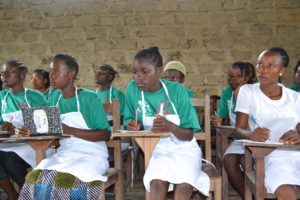The Reading Baseline Assessment targeted 139 students. The Analysis, which revealed the overall performance of students, showed the following:
Letter naming knowledge – 86 % o f the students tested named more than 120 letters per minute. This clearly indicate that the students are comfortable with the alphabet.
Phonemic Awareness- 63.3% of the students tested could not recognize any beginning sounds, 30.9 % recognized less than three out five and 5.8% answered more than three questions out of five.
Sight/familiar words – 33.1% of the students could not call any of the words within three minutes, 54% read less than 30 words per minute and 12.9 % read more than 30 words per minutes.
Reading Fluency – Here students were tested to read a story of 60 words. This activity was also timed for three minutes. 50.4 percent of the students could not read any word within the three minutes period, 33.8 percent read less than 30 words per minute and 15.8 percent read more than 30 words per minute.
Reading Comprehension – the test for reading comprehension is a follow up task for reading fluency. Students who did well in the reading were able to answer comprehension questions, on the other hand those students who found it difficult to read did not answer any of the comprehension questions. 74.1% of the students did not answer any comprehension questions, 25.9 % answered less than three out of five questions and 0 percent of the students answered more than three out of five questions.
This report also revealed to KEEP the level of work needed to be done in the county as:
91.4% of the students have no access to library at school or in their community.
53.2% of the students have no access to reading books at home.
30.9% have no extra reading support at home by parent or family members.
48.2% of the parents do not speak or understand English and 77.7 % of the parents are not literate in any language.
53.2% of the students interviewed have no access to breakfast on school days and
64.7% do not eat lunch during recess time at school.






